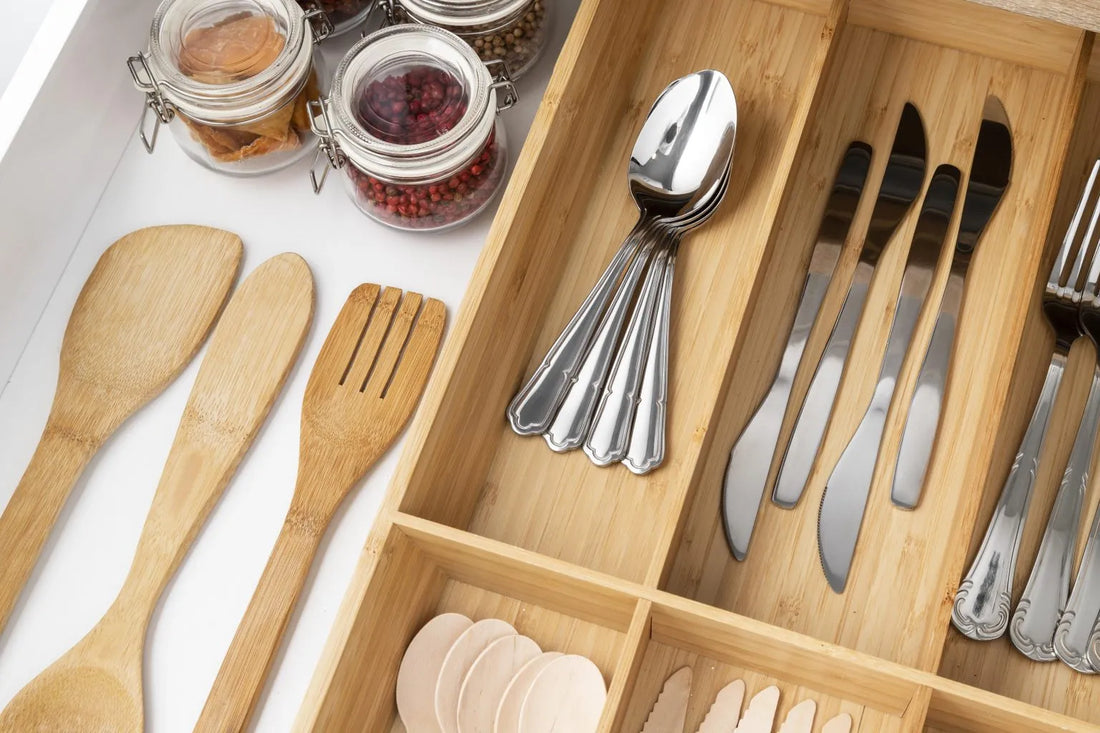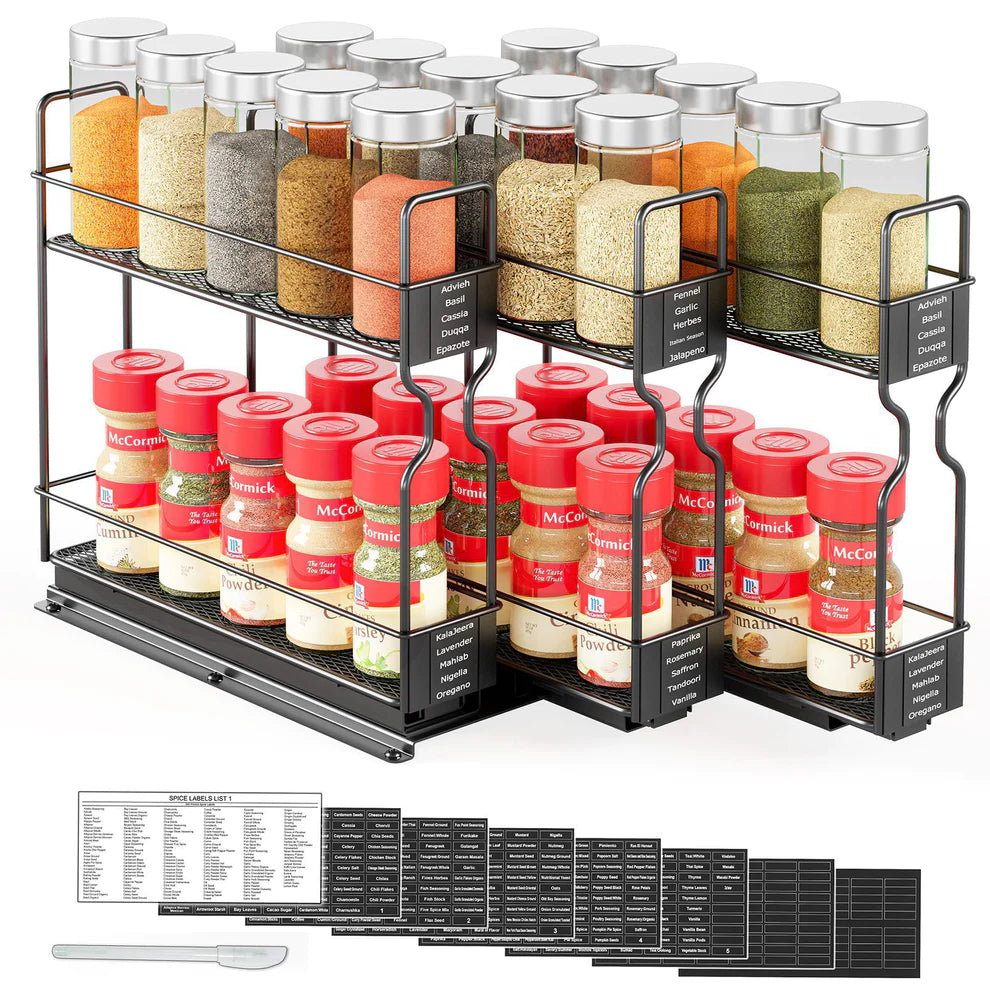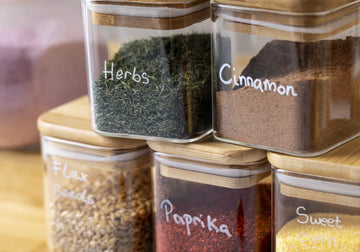
The Dos and Don’ts of Organizing Your Kitchen Utensils
A cluttered and disorganized kitchen can cause unnecessary stress and frustration, making it difficult to enjoy cooking and meal prep. However, it’s possible to transform your kitchen into a well-organized and efficient space with a little effort and planning. One key area to focus on when organizing your kitchen is your utensil storage. Having your utensils easily accessible and well-organized can save you time and energy, allowing you to quickly grab the right tool for the job and get cooking.
This article will explore the dos and don’ts of organizing your kitchen utensils. We’ll cover tips for categorizing your utensils, selecting the best storage solutions, and maintaining a clean and functional utensil organization system. Whether you’re working with a small kitchen or just looking to streamline your cooking routine, these tips can help you achieve a more organized and stress-free kitchen. So, let’s dive in and explore the key strategies for organizing your kitchen utensils.
The Dos of Organizing Your Kitchen Utensils
When it comes to organizing your kitchen utensils, several key dos can help you create a more efficient and functional system. One of the most important tips is to categorize your utensils by use, which means grouping similar utensils together, such as all your measuring spoons or spatulas. Because this can make it easier to find the utensil you need and can also help prevent clutter and disorganization.
Other key dos of organizing your kitchen utensils are to store your most frequently used utensils in an easily accessible location. This might mean keeping them in a utensil holder on your countertop or in a drawer within arm’s reach of your stove or prep area. Keeping these utensils close at hand can save time and energy when cooking and meal prep.
Drawer dividers or organizers are another great way to separate and organize your kitchen utensils. These can help prevent your utensils from becoming jumbled and disorganized in a single drawer, making it easier to find what you need quickly. Additionally, using a drawer organizer can help maximize your storage space and prevent clutter. There are many valuable and affordable products like SpaceAid Drawer Dividers, and they make good quality expandable bamboo drawer organizers. If you’re short on drawer space, consider using a magnetic strip or hanging organizer to store your utensils on the wall, adding additional storage space while creating a unique and functional display in your kitchen.
Finally, it’s important to reassess and adjust your utensil organization system as needed periodically. Over time, your utensil collection and cooking needs may change, which means your organization system may also need to be updated. By taking the time to reassess your utensil storage periodically, you can ensure that your system remains efficient and functional for your current needs.
The Don'ts of Organizing Your Kitchen Utensils
While there are many dos to follow when organizing your kitchen utensils, there are also a few important don’ts to remember. One of the biggest don’ts is to avoid overcrowding drawers or storage containers. When you cram too many utensils into a single container, it can be difficult to find what you need quickly. It can also lead to damage or wear and tear on your utensils. Instead, leave some extra space in your drawers or containers to make finding and retrieving utensils easier.
Another key don’t of organizing your kitchen utensils is to avoid mixing sharp and non-sharp utensils. This is especially important when it comes to knives, as mixing sharp knives with other utensils can increase the risk of injury or damage to your utensils. Instead, consider storing your sharp knives in a separate container or drawer or using a knife block to keep them safely and securely organized.
Another important don’t when it comes to organizing your kitchen utensils is to avoid storing utensils in a location that is difficult to access or inconvenient to use. This might mean avoiding storing utensils in hard-to-reach corners or at the back of deep drawers, which can be difficult to retrieve quickly. Instead, focus on storing your utensils in a location that is easily accessible and within reach when needed.
Finally, don’t forget to clean and sanitize your utensil storage containers or drawers regularly. Over time, these spaces can become dirty or even harbour bacteria, which can be transferred to your utensils and potentially cause illness. By cleaning and sanitizing your utensil storage containers and drawers regularly, you can ensure that your utensils remain clean, safe, and organized.
Additional Tips and Tricks for Organizing Your Kitchen Utensils
In addition to the dos and don’ts of organizing your kitchen utensils, a few additional tips and tricks can help you create a more functional and efficient utensil organization system. One helpful technique is to consider using labels or colour-coding to help keep track of utensils and their designated storage locations. This can be particularly useful if you have multiple people using your kitchen or trying to create a more streamlined and efficient cooking routine. By using labels or colour-coding, you can quickly and easily find the utensils you need even if you’re in a hurry.
Another helpful tip for organizing your kitchen utensils is to utilize vertical storage solutions, such as hooks or shelves, to maximize space in a small kitchen. For example, hang your most commonly used utensils on hooks above your stove, or use a wall-mounted shelf to store your less frequently used utensils. Using vertical storage solutions, you can free up valuable drawer and countertop space while keeping your utensils easily accessible.
Finally, keeping your most commonly used utensils on your countertop for easy access and saving space in drawers can be helpful. For example, you might keep your favourite spatula, spoon, and whisk on a utensil holder on your countertop while storing less frequently used utensils in a drawer or on a wall-mounted organizer. This can help you save time and energy when cooking while also keeping your countertop clear and clutter-free. By following these additional tips and tricks, you can create a more efficient and functional utensil organization system that suits your unique cooking needs and preferences.
At the End
In conclusion, organizing your kitchen utensils is a crucial step in creating a functional and efficient kitchen. By following the dos of categorizing your utensils by using, storing frequently used utensils in an easily accessible location, using SpaceAid drawer dividers or organizers, considering hanging utensils, and periodically reassessing your system, you can create a streamlined and efficient utensil organization system. Additionally, by avoiding the don’ts of overcrowding drawers or containers, mixing sharp and non-sharp utensils together, storing utensils in inconvenient locations, and neglecting to clean and sanitize your storage containers, you can prevent clutter and damage to your utensils while also maintaining a clean and safe kitchen.
We encourage readers to implement these tips and tricks to improve their kitchen organization and save time and energy in the kitchen. With a little bit of effort and planning, you can create a well-organized and efficient kitchen that makes cooking and meal prep a breeze. Whether you have a small kitchen or a large one, these tips can help you maximize your storage space and create a functional and efficient space that you’ll love spending time in. So get started on organizing your kitchen utensils today, and enjoy the benefits of a more streamlined and efficient kitchen.












